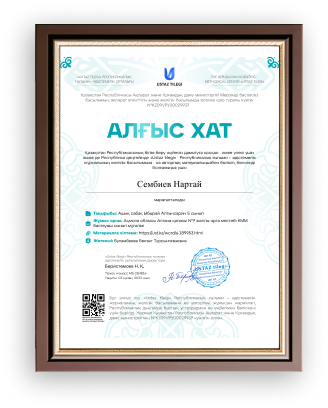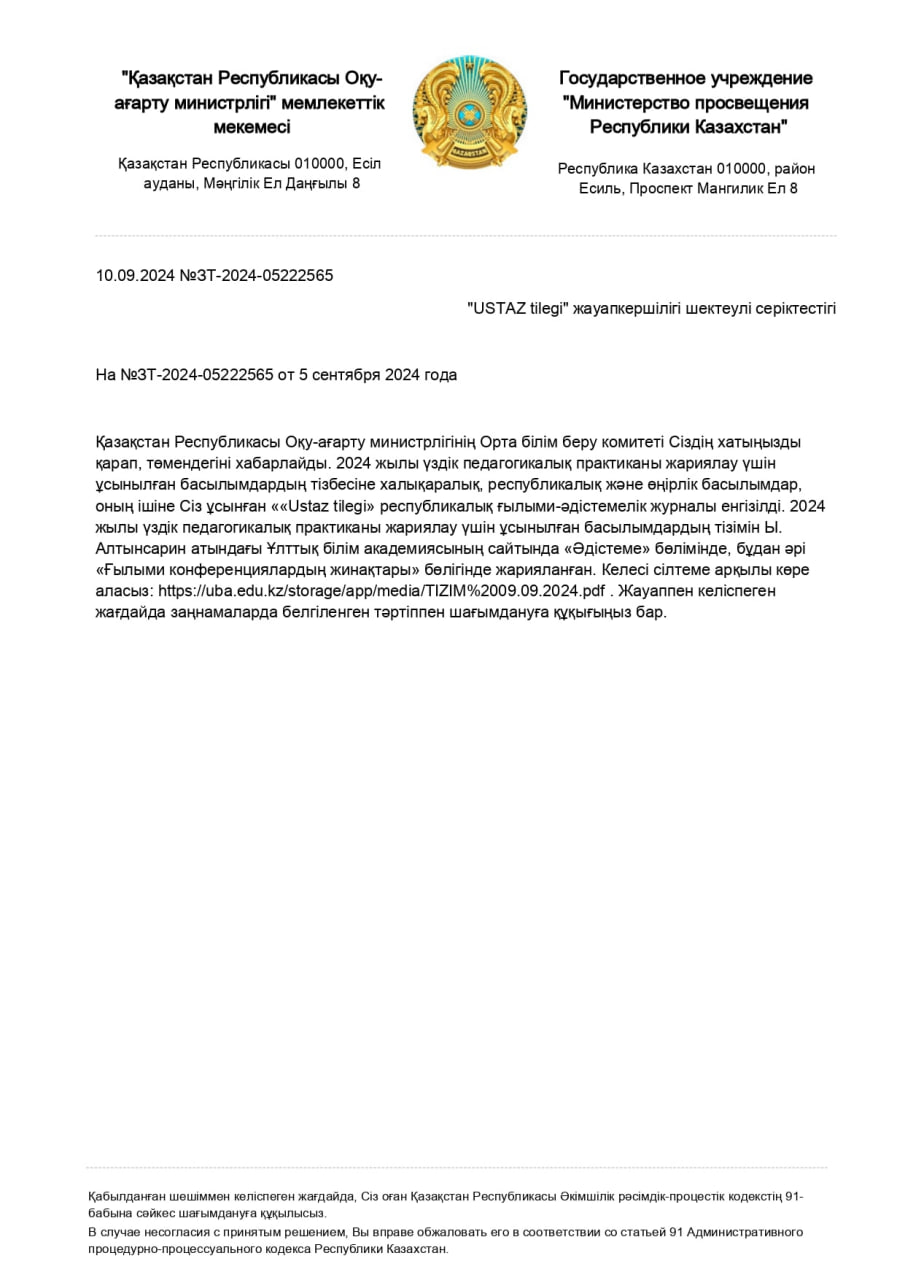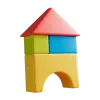|
Part of the
lesson/Time
|
Teacher’s
activity
|
Student’s
activity
|
Assessment
|
Resources
|
|
Beginning of the
lesson
Warming-up
Team
work
3
min.
|
Organization
moment:
1.Greeting.
Asking the date and day
of the week.
“You are
so….”
method helps to start the
lesson with tellingcompliment words to
eachother
The
aim:To develop Ss speaking skills
and create friendly
atmosphere
Efficiency:By telling the compliments
they show their appreciations
.
|
Ssmake a circle and
tell compliments to each other using adjectives without
repeating.
“You are
so(beautiful,cool,intelligent)”
|
At the organization moment T
tries to award active Ss.«The
praise» method is used to
evaluate Ss with phrases
like:
“Good
job!
Well
done!”
|
CD
player
Microphone
|
|
Pre-learning
«Brainstorming» method
Individual
work
5
min.
|
(An activity to revise the language of the previous
lesson.)
T asks a pupil to come to the board and say a cardinal
number (1-1,000)
Aim:Revise the previous lessons
material.Find out how much do they understand ordinal
numbers.
Efficiency:Ss refresh their mind before
starting new theme.
In differentiationpart
«Word
scramble»
method was used to write the
respective ordinal numbers next to
cordinals.
After that T
introduces the aim and theme of the
lesson.
|
Sscome to the board and
write the respective ordinal numbers next to the cardinals using
letters on the board.
|
Descriptor:
- understand the
teacher's instructions
- can write ordinal
numbers
- know materials of
previous lesson.
Total: 3
points
|
Whiteboard
letters
|
|
Middle of the
lesson
Presentation
part.
Team
work.
7
min.
|
Presentation and practice
(Activities to develop the pupils` listening and reading
skills.)
Listen and read.
Go through the pictures of the story and set the scene by
asking the pupils questions about what they can see in the
pictures.
e.g. Teacher: (pointing to picture 1) Where are the
children
Class: They are at a park:
Teacher: (pointing to Lilly in picture 3) What`s wrong with
Lilly
Class: She got sunburnt!
etc
|
Ss answer to the T’s
questions.
|
Descriptor:
-recognise basic opinions in
short
-answer the
questions
Total: 2
points
|
Whiteboard
Pupils
Book
Flashcards
My day
video
|
|
Read the story and answer the
question
T explains the activity and allows the pupils some time to
read the story again silently and answer the questions. Checks
their answers. Asks the pupils to tell where they found the answers
in the dialogue.
Answer key
1.To find ten leaves and name the
trees.
2.A classmate, Drake.
3.Because her arms are
sore.
4.Jake’s
5.Jake’s
team
|
Ss open book on p
40, do exercise 8. Write on their
copybooks.
|
T praise active Ss with
phrases such as: “Good
job!
Well done!” “One more time,
please”
|
Whiteboard
Pupils
Book
Poster
|
|
Pair
work
5
min.
|
. Thinking: In pairs,
answer the questions.
T explains the activity and asks pairs to report back to
the class. (accept all reasonable
answers.)
Suggested answer key
1.They all stayed together and helped each other. They
worked as a team.
2.Yes, because Drake left his team behind. He didn’t care
about his team. He only cared about
winning.
Aim:to develop critical thinking
skills
Efficiency:
Ss can make a plan
and find the answers
|
Ss.
read the
questions and discuss the answers with their
partner
|
Descriptor:
-cooperate as a
pair
-can make decision
and report to school
Total: 2
points
|
Whiteboard
Pupils
Book
Poster
|
|
Team
work
8
min.
|
Act out the story.
•For stronger classes: T assigns roles to the pupils. Allows
them enough time to rehearse their roles in groups. •For weaker
classes: Select a short exchange from the story for the pupils to
act out in pairs.
Aim:to develop speaking
skills
Efficiency:
Ss can act out the
story
Differentiation:«Role
play» is used to develop their
speaking and acting skills
|
Ss practice together
an act outand come to the front
and act out the story.
|
Descriptor:
-can work together as a
team
-can act out the
story
Total:
2points
|
Whiteboard
Pupils
Book
Poster
|
|
Work in
pairs.
5
min
Listening
|
Talking point. Listen and read. Make a new dialogue with
your friend.
T refers the pupils to the picture and the dialogue. Play
the CD. Pause the CD for the pupils to repeat, chorally and/or
individually.. T goes around the classroom providing necessary
help.
A: So, what’s today’s
expedition?
B: We must… .
A: This should be easy. Let’s do
it!
Suggested answer key
A: So, what’s today’s
expedition?
B: We must find these ten wild flowers, name them and draw
them in our notebooks.
A: This should be easy. Let’s do
it!
Aim:develop critical thinking
and listening skills.
Efficiency:
Ss use new
vocabulary and practice it with
groupmates.
.
|
Ss
listen and
follow along. and in pairs act out similar
dialogues
|
Descriptor:
-perceive information by
listening
-act out
dialogues
Total:2
points
|
Whiteboard
Pupils
Book
Poster.
|
|
Team
work
5min
|
STUDY SPOT
(Activities to familiarize the pupils with the [ʃn ] sound
and the different spellings) Listen, point and
repeat
T refers the pupils to the pictures. Points to the first
picture and say: [ʃn ] – fashion.. Checks their pronunciation.
Reviews the spelling of the different words and explains/ elicits
how the words are spelled differently but the ending is pronounced
the same. Play the CD. 1Complete. Then
listen and repeat.
T draws the pupils’ attention again to the [ʃn] sound and
the different spellings. Allows the pupils to complete the missing
letters. Play the CD for the pupils to listen and check their
answers.
Answer key
The ticket for the fashion exhibition at the mansion was
$10!
Aim:develop students listening
and pronunciation
skills.
Efficiency:
Ss can pronounce the
words rightly
|
Ss repeat, chorally and/or individually and listen, point
and r |

















